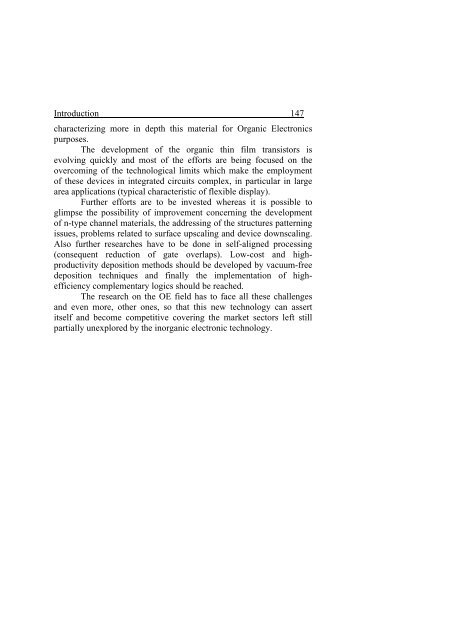tesi R. Miscioscia.pdf - EleA@UniSA
tesi R. Miscioscia.pdf - EleA@UniSA
tesi R. Miscioscia.pdf - EleA@UniSA
You also want an ePaper? Increase the reach of your titles
YUMPU automatically turns print PDFs into web optimized ePapers that Google loves.
Introduction 147<br />
characterizing more in depth this material for Organic Electronics<br />
purposes.<br />
The development of the organic thin film transistors is<br />
evolving quickly and most of the efforts are being focused on the<br />
overcoming of the technological limits which make the employment<br />
of these devices in integrated circuits complex, in particular in large<br />
area applications (typical characteristic of flexible display).<br />
Further efforts are to be invested whereas it is possible to<br />
glimpse the possibility of improvement concerning the development<br />
of n-type channel materials, the addressing of the structures patterning<br />
issues, problems related to surface upscaling and device downscaling.<br />
Also further researches have to be done in self-aligned processing<br />
(consequent reduction of gate overlaps). Low-cost and highproductivity<br />
deposition methods should be developed by vacuum-free<br />
deposition techniques and finally the implementation of highefficiency<br />
complementary logics should be reached.<br />
The research on the OE field has to face all these challenges<br />
and even more, other ones, so that this new technology can assert<br />
itself and become competitive covering the market sectors left still<br />
partially unexplored by the inorganic electronic technology.
















